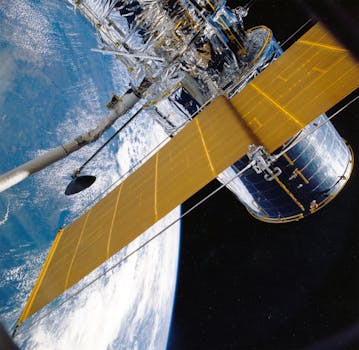
Navigating the Skies: Insights into Recent Satellite Telecommunications Innovations
Navigating the Skies: Insights into Recent Satellite Telecommunications Innovations have revolutionized the way we communicate and access information. With the increasing demand for global connectivity, satellite telecommunications have become an essential part of our daily lives. In this article, we will explore the recent innovations in satellite telecommunications and their impact on the industry.
Satellite telecommunications have come a long way since the launch of the first commercial satellite, Intelsat 1, in 1965. Today, we have a wide range of satellites in orbit, including geostationary satellites, medium Earth orbit satellites, and low Earth orbit satellites. Each type of satellite has its unique characteristics and applications, and recent innovations have further expanded their capabilities.
Advances in Satellite Technology
One of the significant advancements in satellite technology is the development of high-throughput satellites (HTS). HTS satellites have enabled faster data transfer rates, making them ideal for applications such as broadband internet, video streaming, and mobile connectivity. Companies like ViaSat and Hughes Network Systems have launched HTS satellites that offer speeds of up to 100 Gbps.
Another innovation in satellite technology is the use of phased array antennas. Phased array antennas allow for more precise beamforming and steering, enabling satellites to provide more targeted and efficient coverage. This technology has improved the overall performance and capacity of satellite communications systems.
satellite constellations and the Internet of Things (IoT)
Satellite constellations, such as those being developed by SpaceX and OneWeb, are a new trend in satellite telecommunications. These constellations consist of hundreds or thousands of small satellites that work together to provide global coverage and connectivity. They have the potential to enable widespread adoption of the Internet of Things (IoT) by providing low-cost, low-power connectivity for devices.
The IoT is a network of physical devices, vehicles, and other items that are embedded with sensors, software, and connectivity, allowing them to collect and exchange data. Satellite constellations can provide the necessary connectivity for IoT devices, especially in remote or underserved areas where traditional cellular networks are not available.
Challenges and Future Directions
Despite the recent innovations in satellite telecommunications, there are still several challenges that need to be addressed. One of the significant challenges is the issue of space debris, which can pose a risk to operational satellites and other spacecraft. There is a need for sustainable and responsible practices in satellite operations and decommissioning to mitigate this risk.
Another challenge is the need for standardization and interoperability in satellite communications systems. With the increasing number of satellite constellations and systems, there is a need for common standards and protocols to ensure seamless communication and compatibility.
In conclusion, recent satellite telecommunications innovations have transformed the industry, enabling faster, more efficient, and more widespread connectivity. As the demand for global connectivity continues to grow, it is essential to address the challenges and opportunities in satellite telecommunications to ensure a sustainable and connected future.


